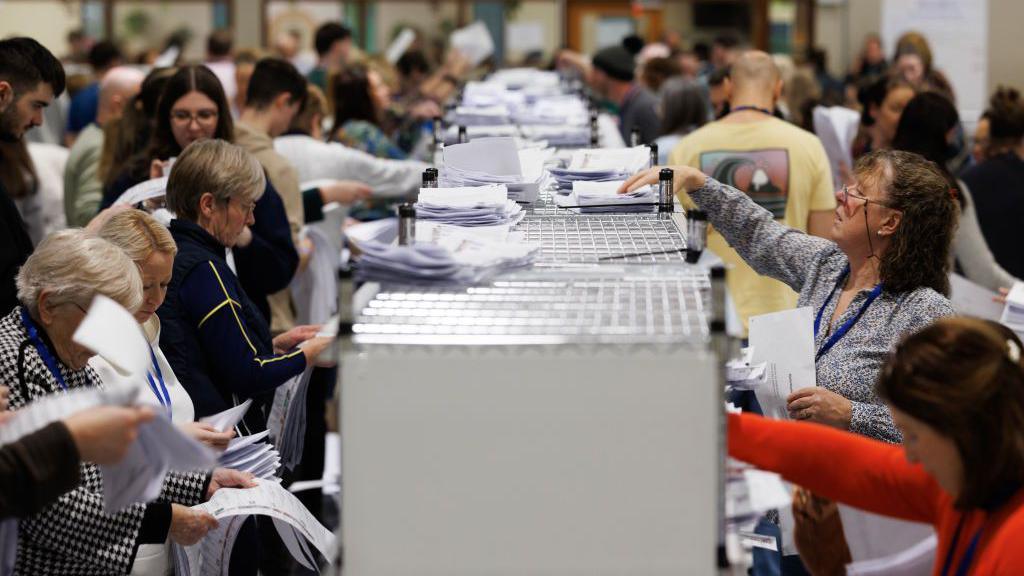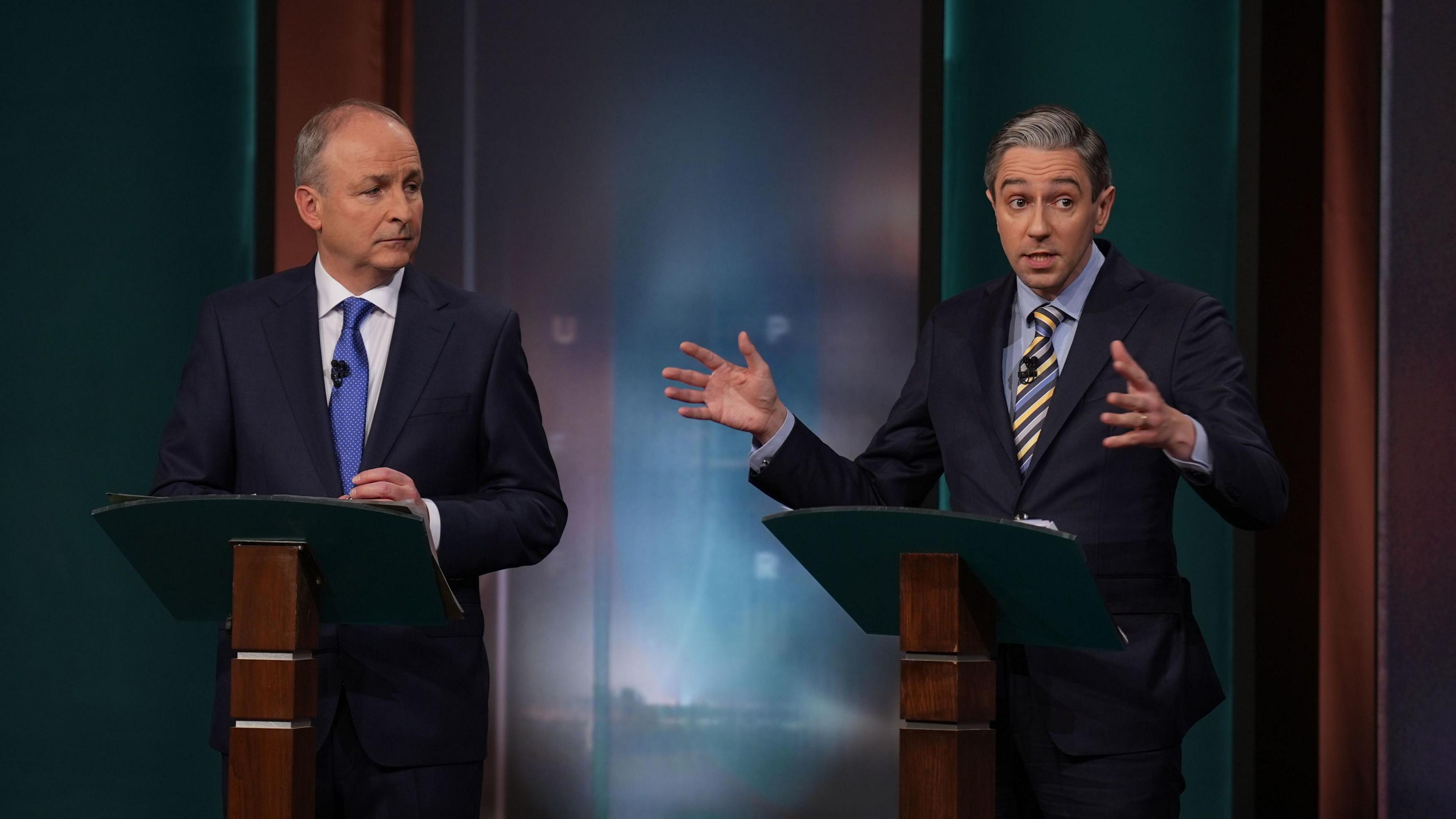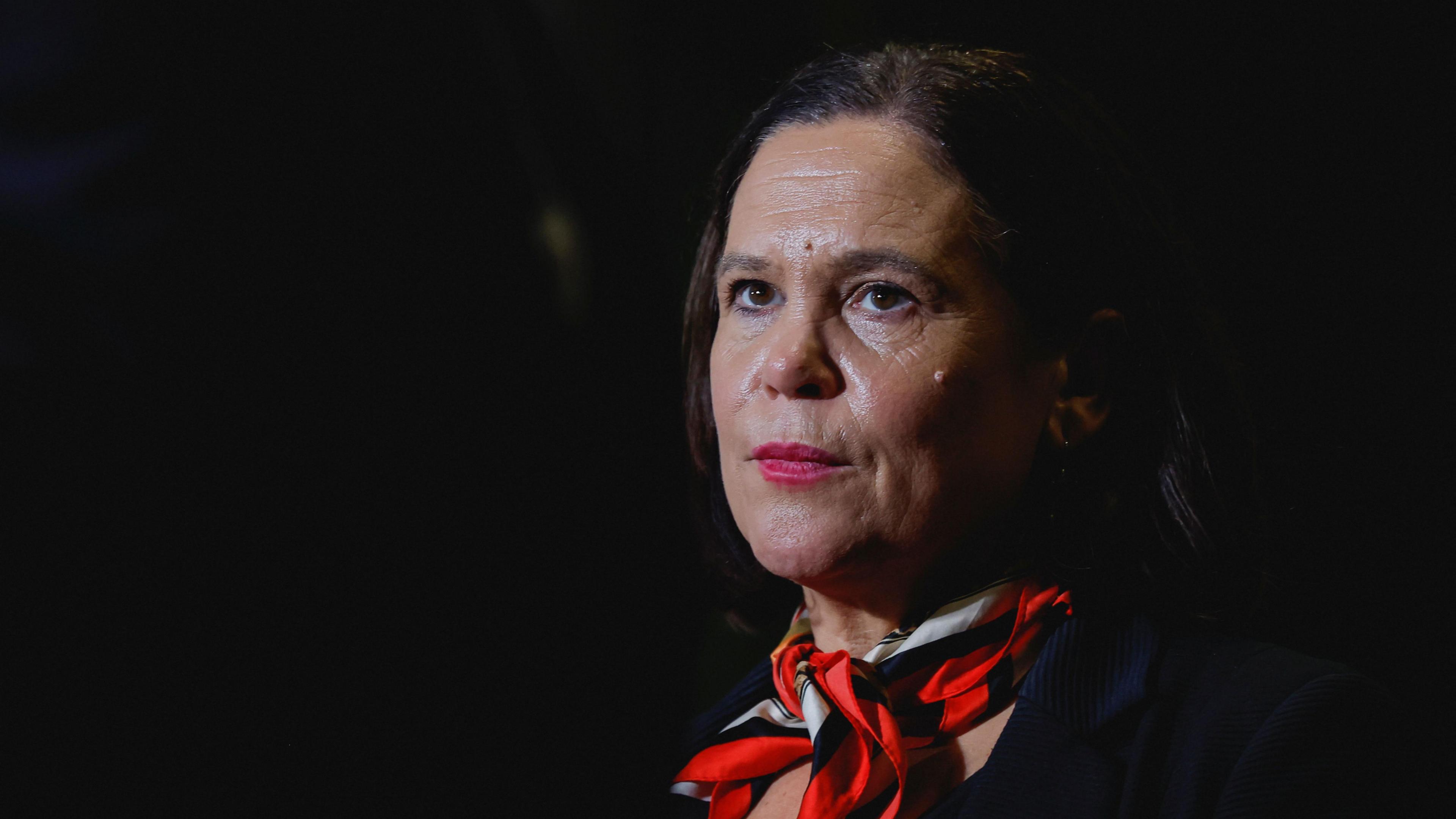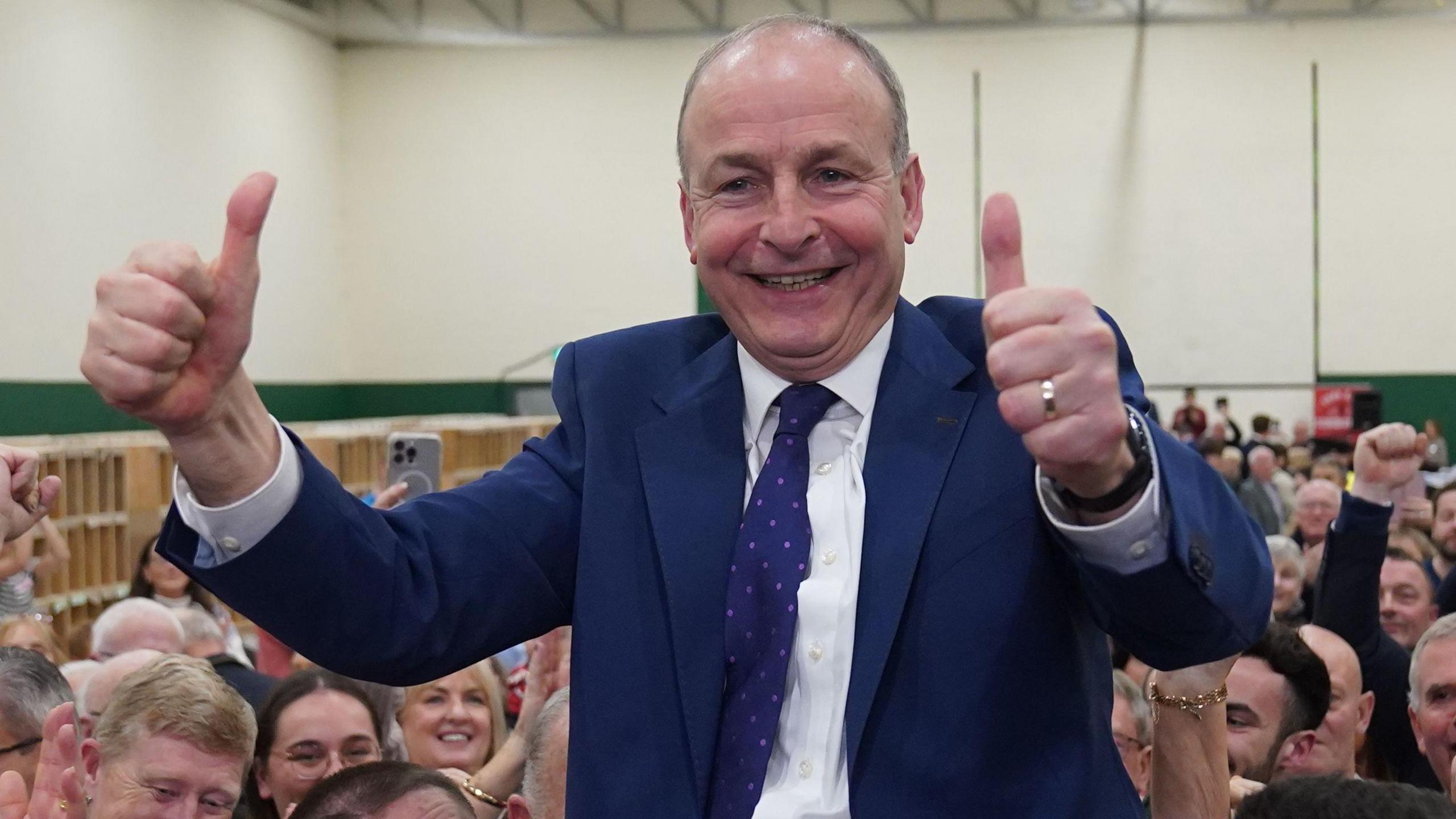What happens next after Ireland's general election?

Voters went to the polls across 43 constituencies in the Republic of Ireland
- Published
After the votes are counted and the results calculated – common goals will be negotiated and a coalition formed.
The shape of the next Irish government is set to be almost the same as the last one.
But it will nonetheless take some weeks for the parties to agree a deal which will culminate with ministers taking office.
Parliamentary arithmetic will set the framework for the coalition talks.
Who could be the next taoiseach?
Fianna Fáil is the largest party, which means its leader Micheál Martin is all but certain to be taoiseach (Irish prime minister) for the second time,
The current holder of the job is Simon Harris – who leads the other centre-right party, Fine Gael.
As part of the two parties’ unprecedented coalition agreement in 2020, they agreed to “rotate” the position of taoiseach – meaning Martin took the job first, then stepped back after two and a half years to become foreign minister and tánaiste (deputy prime minister).
He was succeeded as taoiseach by the then Fine Gael leader Leo Varadkar – who resigned earlier in 2024, to be replaced by Harris.

Micheál Martin and Simon Harris have both held the role of taoiseach
It is likely that the parties will agree again to let each other have a spell in the taoiseach’s office over the course of the five-year government term.
However, with Fianna Fáil having a bigger lead over Fine Gael in the final seat tally this time, Martin’s party may expect to gain more cabinet positions.
Fianna Fáil won 48 seats while Sinn Féin was second with 39 and Fine Gael was third with 38 seats.
The number required for an overall majority is 88.
Fianna Fáil and Fine Gael have 86 seats in the lower house of parliament, Dáil Éireann.
Who could be in coalition?
Fianna Fáil and Fine Gael would like to seek a coalition deal with a third party.
They have both ruled out sharing power with Sinn Féin – the largest opposition party again.
Sinn Féin leader Mary Lou McDonald has said she wants to discuss the potential for a left-wing alliance with other leaders.
But the combined strength of such a group in the Dáil would not be close to the numbers needed to take power.
The Labour Party and the Social Democrats have both made good gains in the general election.
But both are understood to be wary of becoming the junior member of a predominantly centre-right coalition – given the centre-left party which took that role the last time has suffered a near wipeout at the polls.
The Green Party lost 11 seats, and its leader Roderic O’Gorman is the only survivor of the electoral drubbing.
If the parties on the left choose the opposition benches – Martin and Harris may look to independents for support.
Non-party politicians have a long history of playing a prominent role in Irish politics.
In the past some have been appointed ministers.
Parties are likely to hold internal meetings this week about their standpoint ahead of coalition manoeuvrings.
When early results were declared, Martin highlighted three policy areas he believed parties could coalesce around – enterprise, EU relations and home ownership.

Mary Lou McDonald wants to discuss the potential for a left-wing alliance with other leaders
When will the Dáil return?
The Dáil is scheduled to meet for the first time after the election on 18 December, but there is no expectation that a coalition agreement will have been negotiated by then.
It will take longer to put together a programme for government – essentially a plan for legislation, strategies and targets between now and 2029.
Manifestos will be compared, ministries will be chosen and compromises made.
The pre-election ministers will continue in their roles in a “caretaker” capacity until the Dáil passes a motion to approve a taoiseach – and then the new cabinet will be announced.
Barring any unforeseen obstacles - that will probably happen in early 2025.
Related topics
- Published2 December 2024
